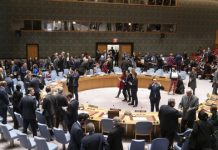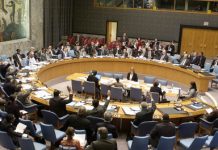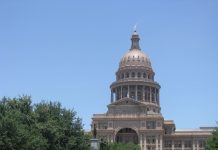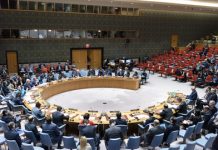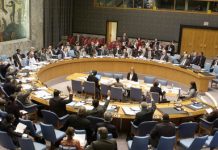“This brings the total functioning hospitals in Gaza to only 14…the situation at the remaining eight hospitals and one field hospital in the city is critical,” said WHO spokesperson Tarik Jasarevic.
The development comes as Israeli forces continue to push into Gaza City with the declared aim of dislodging Hamas fighters believed to be based there. At the same time, repeated Israel Defense Forces evacuation orders have been issued to communities in Gaza City, uprooting hundreds of thousands of people and affecting hundreds of health facilities.
“Even if hospitals are not asked to evacuate, there is a lack of access, there is violence just nearby and that can put them out of service,” Mr. Jasarevic told journalists in Geneva.
City’s key healthcare role
Gaza City forms the backbone of the Gaza Strip’s health system since almost half of all hospitals and field hospitals in the enclave are based there.
“Hospitals in the south are overwhelmed and can’t absorb more,” WHO warned in a statement on Friday which noted that the enclave’s remaining hospitals include eight in Gaza city, three in Deir al Balah and three in Khan Younis. None is functioning at full capacity, the UN health agency stressed.
The situation at Gaza City’s eight remaining hospitals and one field hospital is “critical”, with medical teams “overwhelmed by the influx of casualties resulting from strikes”, in addition to having to treat non-trauma patients.
The four north Gaza hospitals put out of service since 1 September are Al Rantisi Children’s Hospital, the Ophthalmic Hospital, the St. John Eye Hospital and Hamad Hospital for Rehabilitation and Prosthetics.
WHO describes Hamad Hospital as one of the three main specialized rehabilitation facilities in the Gaza Strip. It had been serving 250 outpatients with rehabilitation services, in addition to providing medical care for people injured while seeking aid in north Gaza at its trauma stabilization point, with about 200 patients served daily.
Devastating attacks
Al Rantisi Hospital sustained severe damage from a direct strike on 16 September while 80 patients were inside the facility. It is the only specialized paediatric hospital left in the Gaza Strip. No fatalities were reported in the attack but there was significant damage to rooftop water tanks, communication systems and medical equipment.
Half of the patients fled, while some 40 others remain inside, including four children in the intensive care unit and eight newborns, according to WHO. Most of its medical equipment was transferred to Al Helou, As Sahaba and Patient Friendly hospitals, all in Gaza City.
In addition to the latest hospital closures, the situation is “critical” at Gaza City’s remaining eight hospitals and one field hospital. They are all “overwhelmed by the influx of casualties resulting from strikes”, low on supplies and forced to treat patients on the floor.
Highlighting critical shortages in blood units, blood bags and transfusion sets “services could shut down within days, without urgent replenishment”, WHO insisted.
According to the UN health agency, all but one of the dozen reported attacks on healthcare between 7 and 17 September have been in Gaza City, with Khan Younis the 12th.
Medicines needed without delay
“More violence only means more injured people. It means more casualties, more deaths and it means less access,” Mr. Jasarevic said. “People in Gaza are suffering from multiple displacements; there are shortages of medical supplies, there are issues of access both for humanitarians, for health workers, also for patients.”
The WHO spokesperson reiterated the health agency’s call for the urgent evacuation of the thousands of seriously ill patients in need of specialized care.
“Over 15,000 people…need to be evacuated for medical reasons and evacuations are really going very, very slowly,” he said. “Again, we can only appeal for a ceasefire, appeal for unhindered access so we can try to support what’s left of the health system in Gaza with the medical supplies, with the emergency medical teams and with everything else.”
Source of original article: United Nations (news.un.org). Photo credit: UN. The content of this article does not necessarily reflect the views or opinion of Global Diaspora News (www.globaldiasporanews.net).
To submit your press release: (https://www.globaldiasporanews.com/pr).
To advertise on Global Diaspora News: (www.globaldiasporanews.com/ads).
Sign up to Global Diaspora News newsletter (https://www.globaldiasporanews.com/newsletter/) to start receiving updates and opportunities directly in your email inbox for free.




